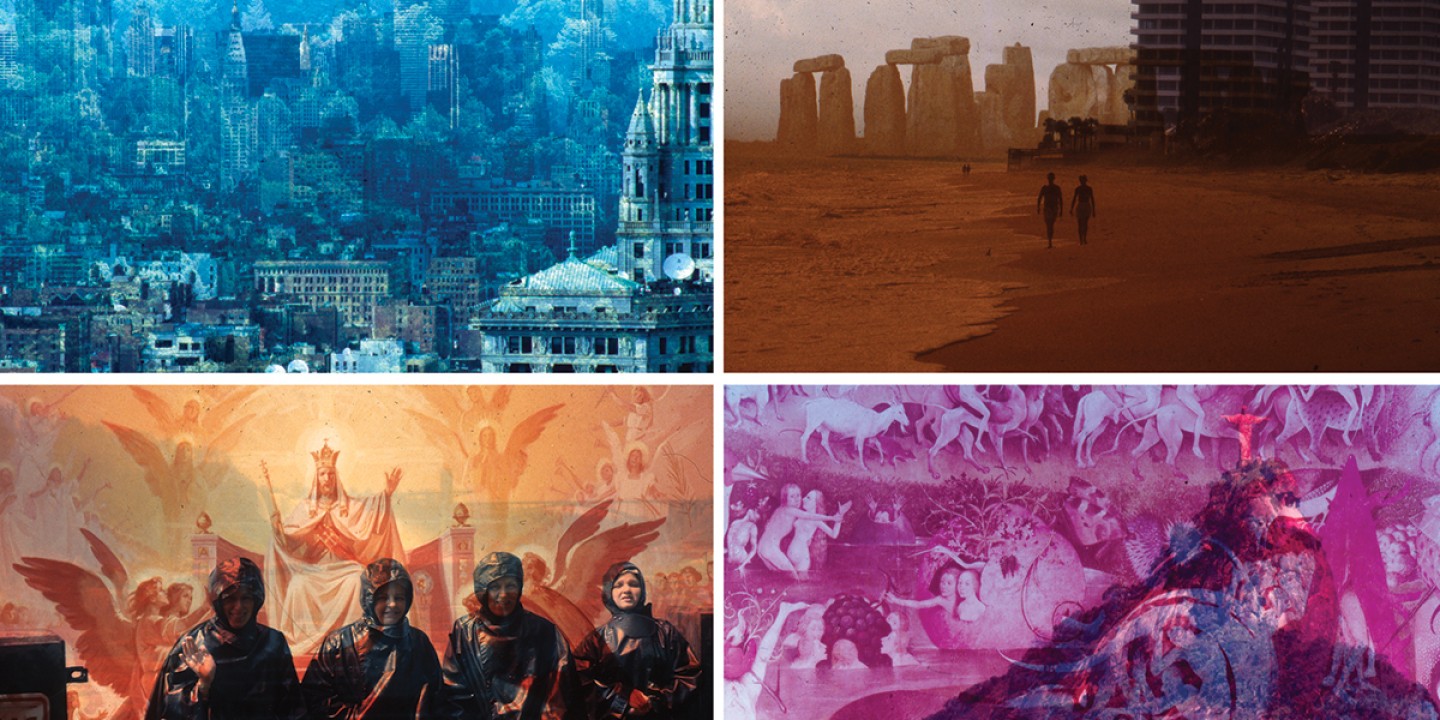Strange Histories series, original 35 mm slide collages (2013–present), by Ian Trask

I grew up hearing the whir, flutter, and occasional clunk of my father’s slide projector in the dining room as he practiced lectures about his latest medical research. To my father, the slide carousel was a trove of precise data, but to me the impression was entirely aesthetic, a sort of mystical veil of eerie blue light punctuated with inscrutable signs, equations, and microscopic details. In my memory, all these translucent images combine, as if layered on top of one another in some infinite palimpsest.
Ian Trask’s Strange Histories—a series of collages made by fusing two 35 mm slides over one another—returns me instantly to those moments, before the disenchanting effect of digital projectors and PowerPoint. Trask’s compositions are at once refreshingly simple—they require no further manipulation of images—and beautifully beguiling. His source material finds him more often than he finds it, as people over the years have given him boxes of slides ranging from art history lectures to corporate promotions to exotic travel snaps. The resulting compositions make a sort of surrealist sense, as if he has helped two worlds, destined to find each other, melt together.
Trask has a special (sometimes cheeky) eye for religious resonances. In one collage, tourists at Niagara Falls find themselves unwittingly immersed in a Last Judgment scene. In another, Trask takes the frolicking nudes of Hieronymus Bosch and introduces them to Christ the Redeemer in Rio de Janeiro. Often, however, the theological resonance of his compositions lies more in mood than iconography. Many images seem to convey a paradise lost, from a cityscape swallowed by a forest to condominiums condemned to neolithic ruins. In Trask’s hands, obsolete technology manages to offer us strangely poetic messages in a bottle, relics worth preserving long after their sender’s purpose has become obscure and faded.




